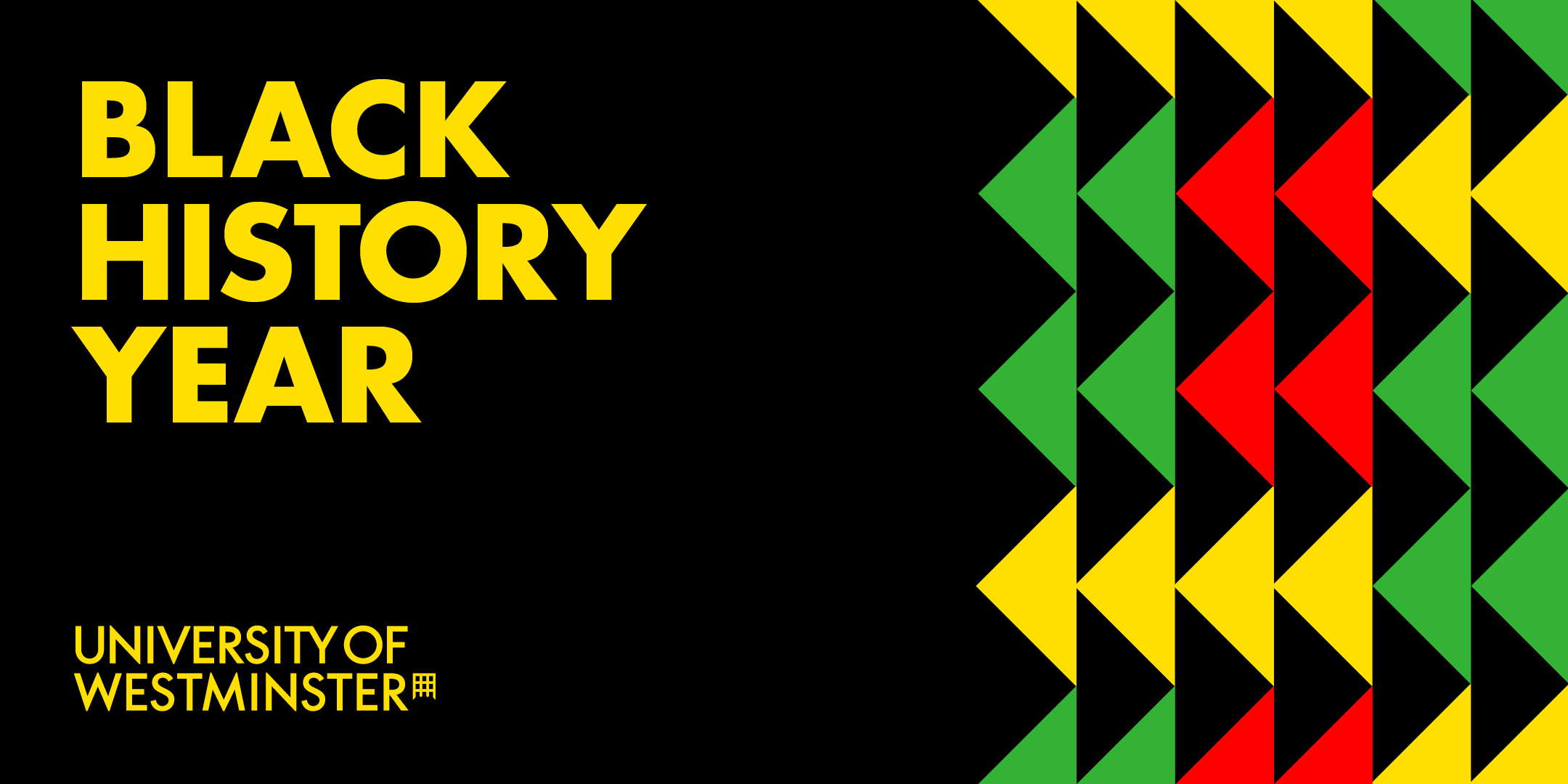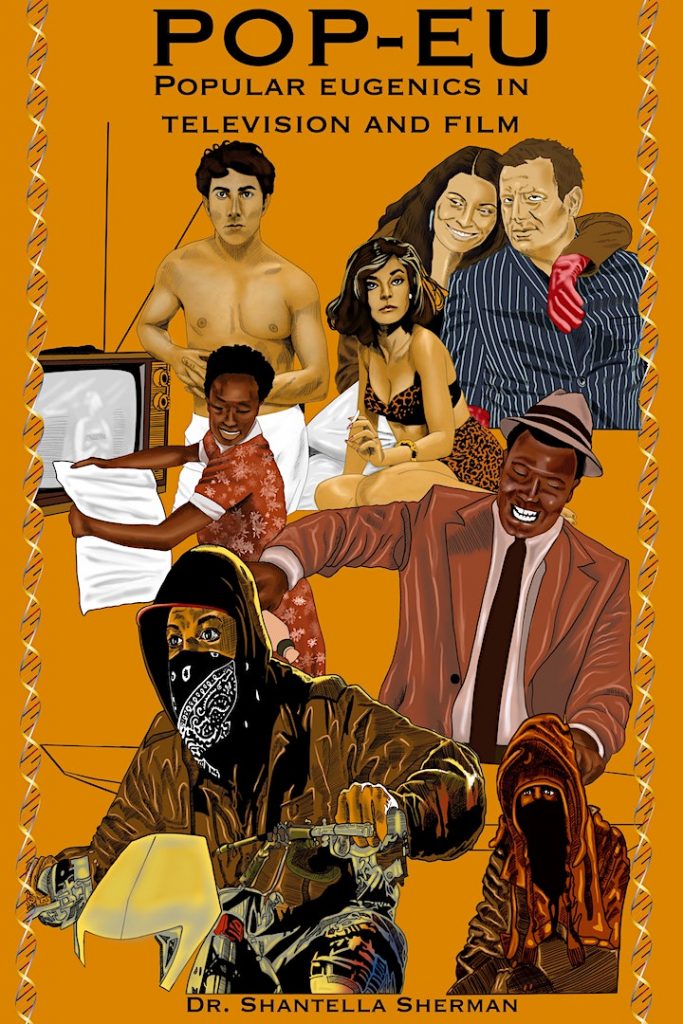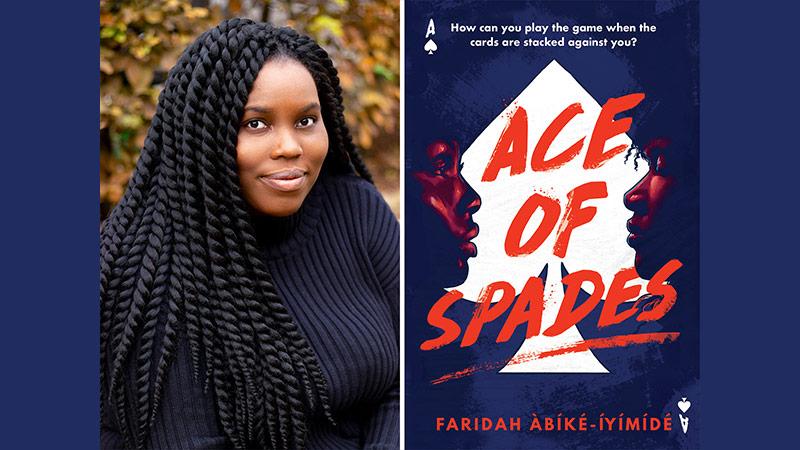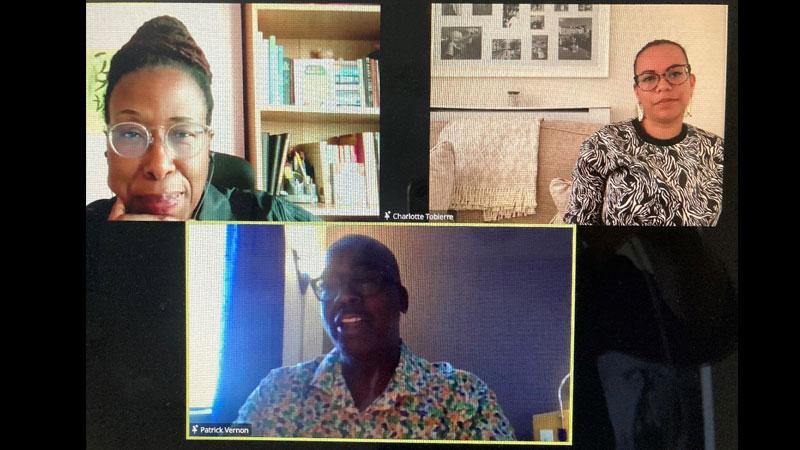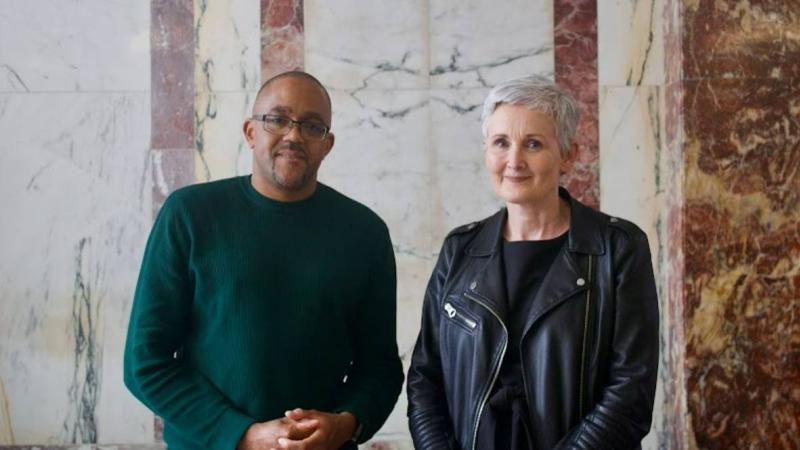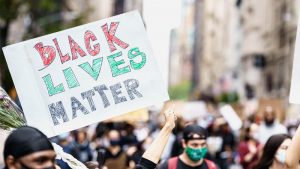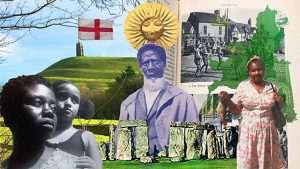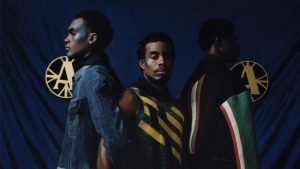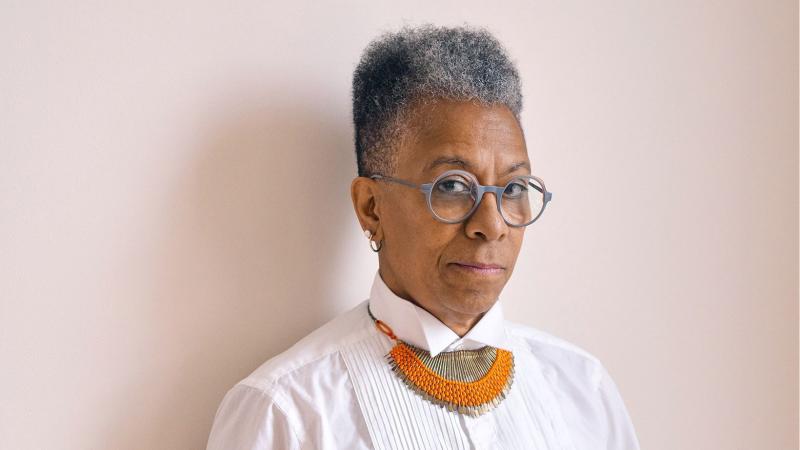Archive
The Photograph (available on Netflix)
Reviewed by Grace Egbewole-Adereti, Equality, Diversity and Inclusion Programme Coordinator
This film begins with the unexpected death of Christina Eames, a famed photographer. Christina’s death leaves her estranged daughter and Museum Curator, Mae, with more questions than answers and leads her on a journey to find out more about her mother.
Set in both modern day New York and 1984 Louisiana, the plot thickens as Mae meets Michael, a journalist, who stumbles across the work of her late mother whilst working on another story and unfolds two parallel love stories which unwind across generations.
Director Stella Meghie unravels the beauty and pain of love, the emotions, tests, decisions and consequences it conjures, and the extraordinary things that can happen to ordinary people. A mood evoking love story with a trailblazing jazz soundtrack to match, this film is sure to get you in touch with your emotions.
Samskara, The Yard Theatre
Review by Kemi Bandele-Forbes
Greeted in the dark auditorium by the Silent Man, a topless muscular figure who uses his physical prowess to visually embody the innate strength of the Black man, Samskara takes the audience on an explorative journey of suppressed emotions, generational trauma and Black boy joy.
As the name suggests, Silent Man utters no words throughout the 90 minute performance but his physicality is beautifully captioned by the talented djembe drummer. The two create a mesmerising pairing, using movement and music to illustrate the emotional journey that the four speaking characters embark on.
The four interwoven characters depict multifaceted Black British men of different generations each struggling with an emotional disconnect. The stage is reminiscent of a group therapy session with each character individually taking to the spotlight to deliver snippets of their life story via monologue. From the young buck struggling with authoritarian figures to the older man blaming his woes on the younger generation; each character’s attempt at honest introspection fails as they each reach a stifling, emotional impasse. The silent protagonist appears at each juncture desperately hoping for, at times attempting to physically aid, a breakthrough to no avail.
As the piece progresses, glimmers of hope appear between each character as emotional walls begin to crumble and realisations are made that there is real strength in vulnerability. The shedding of societal expectations and stereotypes culminates in a beautiful crescendo of emotional freedom that the four speaking characters embrace wholeheartedly. Bravado and ego is replaced with pure joy and brotherhood. They can now breathe.
Samskara skilfully weaves witty dialogue, captivating choreography and authentic Black male experiences to produce a wonderfully important piece of theatre.
After two sell-out runs in 2021 and 2022, Samskara is due to return in the new year to continue mesmerizing its audiences.
Marys Seacole, Donmar Warehouse
Guest review by Kemi Bandele-Forbes, Support & Wellbeing Team Manager, Camden Carers.
Delving into the extraordinary life of the formidable 19th Century doctress, Marys Seacole takes us on an explorative journey of caring through the ages.
The opening scene sees us meet Mary, who introduces herself with the boastful pride of a true Jamaican whilst frequently referring to the “good Scotch blood” running through her veins. She seemingly attributes her more positive qualities to her British ancestry, which to today’s audience may seem perplexing. However, this is purely a reflection of the era Mary was born into; one which viewed Britain as the Motherland.
However, it soon becomes evident that this play is not a typical exploration of the nurse’s life when the spirit of her mother appears onstage to fit her with a Bluetooth headset.
The confusing pluralisation in the title makes itself apparent as the audience is transported to a modern-day hospital with “today’s” Mary caring for an elderly white dementia patient. At this point, it becomes clear that we are not only witnessing the adventures of Mother Seacole but also the comparisons to the sacrifice and often ill-treatment that make up the Black immigrant care professional experience. In the face of condescension and thinly veiled insults from the patient’s daughter, modern Mary and her young Jamaican colleague dynamically navigate their caring responsibilities with witty retorts, sweetly delivered in Jamaican patois.
Throughout the performance, we are transported between various time periods and scenarios, which, although confusing at times, are interwoven with a humour that highlights Seacole’s resilience in the face of adversity and the white superiority complex.
Marys Seacole is not for the faint-hearted! From faecal incontinence to vomiting, childbirth to graphic war injuries, the cast does not shy away from leading the audience through real experiences that those in caring professions face.
Of course, no account of Mary Seacole is complete without the mention of Florence Nightingale. Hailed as a heroine and symbol of modern medicine, the less-known side of Nightingale is revealed, which shows her as cold, uncompassionate and prejudiced.
Amidst the horrors of the Crimean War, we are finally introduced to Mary’s mother, who delivers a no holds barred monologue on white terror, the biggest and most longstanding plague of the last few centuries. She proclaims, “Them need wi but them nuh want wi”, underscoring a common thread that runs through much of the colonial immigrant experience.
Ace of Spades, Faridah Àbíké-Íyíké (2021)
Reviewed by Kate M Graham, Senior Lecturer in English Literature, University of Westminster
Published in June this year, Faridah Àbíké-Íyíké’s extraordinary debut novel Ace of Spades has already graced the New York Times bestseller list and been described by Gal-Dem as “one of 2021’s biggest books”.
These are fitting tributes for a novel which manages to be both entertaining and searingly political throughout.
The protagonists of Ace of Spades, Devon and Chiamaka, are students at the Niveus Academy – Chiamaka the popular girl, Devon the scholarship kid. As the novel starts, they are brought together when both are announced as Senior Prefects. But this announcement marks the start of an unravelling, and Devon and Chiamaka become bound together as the elite school’s racist structures and histories slowly come to light across the novel.
Àbíké-Íyíké offers an engaging take down of elite education’s institutionalised and generational racism here, and part of the novel’s draw lies in its ability to demonstrate not just the (racist and homophobic) violence and threat faced by Devon and Chiamake, but the power of and hope in their resistance.
This is a YA novel and it’s indebted to TV shows like Gossip Girl, but also tips its hat to literary fiction like Donna Tartt’s The Secret History. Impressively, it manages to do both of these things while employing some skilful worldbuilding and pulling the reader into a narrative that moves at a blistering, but well-controlled, pace.
Althea McNish: Colour is Mine, at William Morris Gallery
Review by Jasmine Taylor, Senior Lecturer in Music, University of Westminster
The Colour is Mine exhibition is the first retrospective to celebrate the brilliant design career of the pioneering Caribbean fabric designer Althea McNish (1924-2020).
McNish who emigrated from Trinidad to Britain as a young woman was catapulted into the vanguard of British design when in 1957, her graduation show at the Royal College of Art was brought up by the owner of Liberty’s. On that same day, she was also commissioned to design fabrics for Dior. These companies recognised that her revolutionary experiments with texture, colours and multi-layered patterns met the needs of consumers desperate for contemporary and innovative designs in post-war Britain. As the list of her prestigious clients grew, McNish became the first Caribbean woman to achieve prominence in the field of textile design and to receive international recognition. She was responsible for some of the 20th century’s most memorable fabric designs and today examples of her work can be found in museums all over the world.
McNish made important social as well as cultural contributions to society in the post-war period. For example, she was the only female member of the Caribbean Artists Movement which flourished from 1966-1972 and was a patron of the organising committee of the Notting Hill Carnival.
Her spectacular designs are exhibited over three galleries at the William Morris Gallery; but you must hurry if you do not wish to miss this sensational and free exhibition which finishes on 11 September 2022.
https://www.wmgallery.org.uk/whats-on/exhibitions-43/althea-mcnish-colour-is-mine
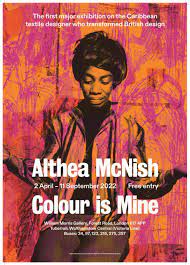
America in Crisis exhibition, at Saatchi Gallery
Reviewed by Elina Souris, BA Politics and International Relations Student, University of Westminster
America in Crisis brought together 40 leading American photographers and over 120 works exploring social change in the US from the 1960s up to the present. Organised by Saatchi Gallery, the exhibition is curated by Sophie Wright, Gregory Harris from Atlanta’s High Museum of Art, and LA-based photographer and academic Tara Pixley. (www.saatchigallery.com)
This review outlines what I learnt about the American experience in the exhibit, via dramatic photos of key events in American history, not just for People of Colour but also a look into the White American poverty experience.
The images serve as a stark reminder of how the US has handled its civilians, those who have been disproportionately affected by those in power throughout the years, and most recently a look into those who have been worst hit by the Covid pandemic.
THE AMERICAN DREAM
The current violence in America is a global story. The murder of African Americans, a corrupt law and order system, and a homeless crisis are all displayed in the Gallery and make it hard to believe that this nation is one of the strongest in history. We are usually told that America is the modern hub of the West. Yet, the pictures tell a different story.
“American life today is entangled with violence in a way that was unheard of in 1968. The images of that time where the assassination of a President and a far-off war were the pivotal violence experienced by a horrified American public seem quaint in comparison to the ceaseless gun violence Americans currently experience…Like a hall of mirrors reflecting or distorting the truth, this set of beliefs is a corridor to the past in which the American dream was born.” – Mitchel Levitas. America in Crisis, 1969
These quotes, which were situated around the rooms, capture the essence of a dramatic sequence of images that portray how America reacted to JFK’s assassination and the gun violence laws, approaches and policies that ultimately led to his death. Picking up on that theme, gun violence is immortalised through the lives of terrorised American citizens, leading to state/police brutality against the most vulnerable citizens. Images of the shooting of a Black man, the tackling of innocent civilians, using tear gas and riot gear…all a scary reality to digest.
The barrens of the USA – backcountry areas, an undercity of tents and rubble, places of ruin – showed a different side of America no media outlet cares to acknowledge. This is a world of civilians in poverty, some centred within a homelessness epidemic. A world of crowded/untamed housing is reflected in the mournfulness of diverse faces and the debris that surrounds them, delivering a jolt to the system. The violence in the streets and children in squalor make the idea of the American dream hard to believe.
The exhibition provides an in-depth look at how America’s democracy has been portrayed over time, as well as the American people’s experiences that aren’t depicted in Western media. One of my favourite photographs is of a child riding a horse with a backpack. He is dressed in modern attire while riding an obviously outdated mode of transportation – a strong visual sign of how antiquated this continent is.
It was interesting to witness juxtaposition through the pictures: the Black Lives Matter demonstrations contrasted with protests arising from the Capitol storm; the faces of those storming the capital with pride contrasted with those protesting for basic human rights with fear and heroism plastered on their faces, while not knowing where their movement would lead them.
The exhibition held to a strict theme throughout ‘America is not the dream’
Available at: https://www.saatchigallery.com/exhibition/america_in_cris
Get Up, Stand Up, Lyric Theatre
Reviewed by Deborah Husbands, senior lecturer, co-chair of BME network, University of Westminster
With an explosion of music, dancing and thumping energy, Bob (Robert Nesta) Marley and his entourage bounced onto the Lyric stage to the cheers of a delighted audience and full house. The kaleidoscopic performance begins with a brief insight into Bob’s early childhood. An anguished separation from his mother, Cedella, is constructed to set the scene for Bob’s life as a rebel. Cedella sends Bob to Kingston, Jamaica’s capital, ‘for a better life’ and to be with his father, who rejects him. Instead, Bob ends up living with an abusive aunt before emerging onto the music scene with the Wailers, a duo of like-minded rebels (Peter Tosh and Bunny Wailer). Bob’s music is used to compelling effect to re-tell significant events of his life, such as meeting Rita, his main love interest, wife and the mother and eventual carer of just some of his many children.
Bob’s extra-marital affair with Cindy Breakspeare (Canadian-Jamaican model and ex-beauty queen) punctuates domestic stability, sending Rita into a tailspin with a heartbreaking rendition of ‘No Woman No Cry’. In fact, the vocal force of the I-Threes (Bob’s famous female backing singers) runs counter to the likely patriarchal narrative of the times, giving Rita, Judy Mowatt and Marcia Griffiths an extraordinary presence and agency.
But it is the tormented and conflicted portrayal of Bob that (rightly) dominates the stage with his burning desire for world peace, frequently marred by the antics of mercenary record producers and racist encounters in hostile environments, including during visits to Britain. Meanwhile, the spectre of death looms large as Bob is diagnosed with melanoma (beginning in one toe before metastasizing through his body). His decision to leave the cancer untreated so ‘the show can go on’ is reflected in the seminal lyrics of Trenchtown Rock: “when the music hits you, you feel no pain.”
Bob is depicted as larger than life with an outpouring of powerful music during this relatively punctuated re-telling of his life. Be prepared to join the entourage as they belt out hit songs such as ‘Jammin’, ‘Exodus’ and ‘Don’t Worry About A Thing’. But for me, the most poignant moment was Bob’s sonorous soliloquy where he sequentially outlined the massacre of the Arawak Indians and near decimation of the Maroon population in Jamaica by pirates and plunderers (aka ‘explorers’), paving the way for enslaved Africans to become the core people of a Jamaica now bereft of its Indigenous. While Bob could never fill this gap, he left a huge musical legacy that has popularised reggae music and garnered fans from around the globe.
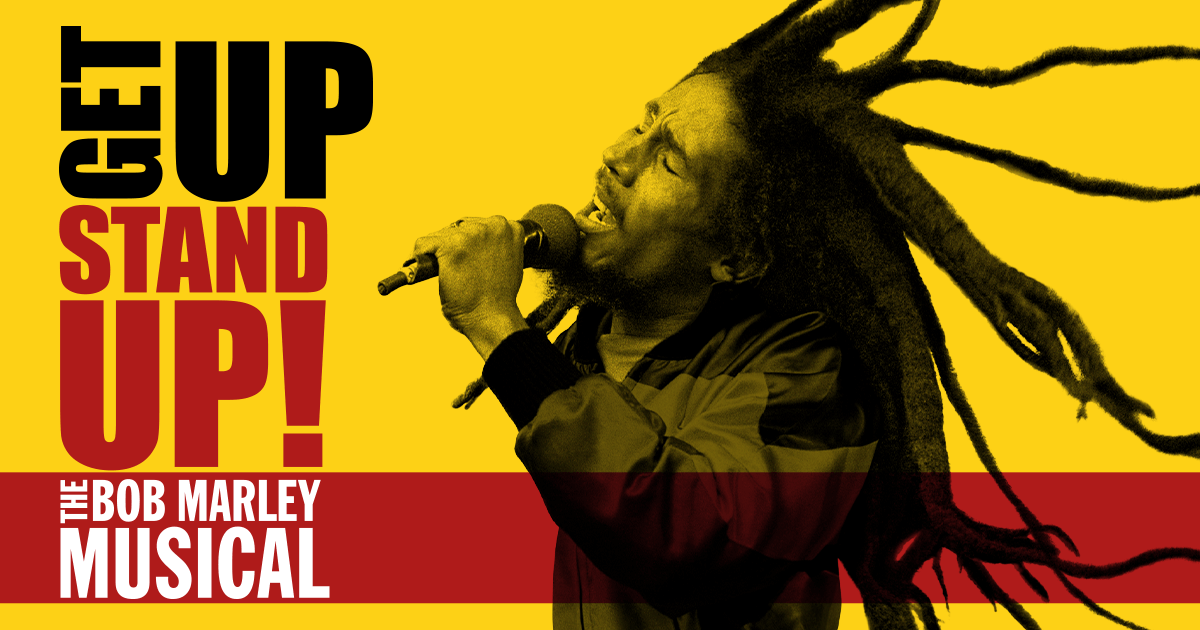
Windrush
People who landed in the UK from Caribbean countries between 1948 and 1973 are known as the “Windrush generation.”
‘On 22 June 1948, the MV Empire Windrush docked at Tilbury carrying 492 people from Jamaica, Trinidad and Tobago, and other islands in the commonwealth, thus inaugurating the process of post-war mass migration to Britain’ (BBC, 2018). Windrush is the name given to the case involving Caribbean immigrants who were brought to the United Kingdom after WWII to assist in rebuilding the economy, infrastructure, and other aspects of the country (Mead, 2009.) Many of these migrants went on to work as manual labourers, cleaners, drivers, and nurses.
The Windrush crisis occurred in 2017, when it was revealed that hundreds of Commonwealth residents – many of whom were from the ‘Windrush generation’ – had been wrongfully jailed, deported, and denied legal rights despite having been granted the opportunity along with their families to live, work, and attend school. There is an ongoing fight to give justice to those wrongfully detained, including people reporting through social media, news, books, talks and events.
For further information on the status of Windrush, please visit Windrush organisations, charities, and news websites.
Some useful links:
https://windrushfoundation.com
https://www.theguardian.com/uk-news/windrush-scandal
References:
BBC (2018). Windrush generation: Who are they and why are they facing problems? BBC News. [online] 18 Apr. Available at: https://www.bbc.co.uk/news/uk-43782241.
Matthew Mead (Mead, 2009) Empire Windrush: The cultural memory of an imaginary arrival. Journal of Postcolonial Writing, 45:2,137-149.
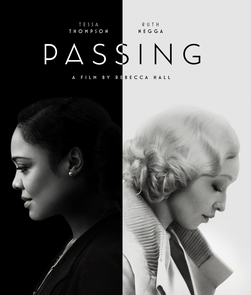
Passing
Reviewed by Deborah Husbands, senior lecturer, co-chair of BME network, University of Westminster
Set in 1920s New York, Passing uses a monochromatic lens to situate the lives of two ‘coloured’ women. The story picks up on the opportunity to renew an estranged friendship between Reenie (Tessa Thompson) and Clare (Ruth Negga). Reenie is seduced by Clare’s sensuality while, at the same time, shocked at her blatant passing as White based on her light complexion. The act of passing harks back to the ‘one-drop rule’ where a person was considered ‘coloured’ (Black) if they had even one Black ancestor. Clare’s husband, who is White, has no idea his wife is ‘coloured’. On meeting Reenie, he expresses concern that his wife appears to be getting darker by the day. Meanwhile, his hatred for Black people is blatant and exemplified by unapologetic use of the n-word.
Reenie is married to Brian Redfield (André Holland), who is a Black doctor. Interestingly for the times, the Redfields are a relatively affluent couple, complete with a live-in maid. Nevertheless, Brian speaks openly to his sons about the reality of racism by telling them about the infamous lynching of John Carter in Little Rock, Arkansas. On the other hand, Reenie doesn’t want her children exposed to “the race problem” and won’t discuss this in her home. This is a continuous sore point between Reenie and Brian, who wants to leave the US because of racism.
Reenie’s complex character is further highlighted by her reactions to the hypocrisy that frames Clare’s world. For Clare, her true identity as a ‘coloured’ woman lies in forging a friendship with Reenie.
Although Reenie’s involvement with the Negro League empowers her identity, the brutality of the final scenes (which I watched several times) brings home the fragility and danger associated with being ‘coloured’, no matter the hue. There is more to this story than can be unpacked here. Still, it’s worth a watch for an insight into the dynamics of pigmentocracy, colourism, and racism reflected in Reenie’s seminal line: “We’re all of us passing for something or other, aren’t we?”.
Rainbow Milk, Paul Mendez (2020)
Reviewed by Kate M Graham, Senior Lecturer in English Literature, University of Westminster
Paul Mendez’s Rainbow Milk is a vibrant and unapologetic look at the life of Jesse, a young Black gay man from the Black Country. Born into a family of Jehovah’s Witnesses, Jesse seems to excel at life in the church until a friend accuses him of making sexual advances and he’s expelled from the congregation. If Jesse’s break from the Witnesses is brutal, his break from his family is devastating and he leaves his home for London where he slips easily into sex work.
Central to the second half of the novel is Jesse’s relationship with his flat mate, Owen. We’re introduced to Owen one Christmas, on a day which starts with Prosecco and ends tragically, but the intervening tour through music, drugs and food cements the connection between the two men.
The relationship with Owen might provide us with a romantic conclusion for Jesse, but in his depiction of the life of a young Black gay man, Mendez pulls no punches. Jesse’s body is objectified in problematic and harmful ways right up to the novel’s conclusion.
In Rainbow Milk, Jesse’s life is situated at the intersections of a number of very specific identities, but Mendez effortlessly broadens the perspective of the novel through the sections reflecting on the experiences of the Windrush generation and through the novel’s 1990s soundscape. These broader political and musical contexts get bound up with Jesse’s specific lived experience in a deeply meaningful fashion.
As Marlon James has suggested this is a “remarkable debut”.

The Night Woman by Julene Robinson (at The Other Palace theatre)
Guest review by Kemi Bandele-Forbes, Support & Wellbeing Team Manager, Camden Carers.
Set against the backdrop of complete darkness, The Night Woman takes us on an explorative journey through blackness, womanhood, and self-love. Performed to an intimate crowd at The Other Palace Theatre, Julene Robinson starred in this one-woman show across three nights in March 2022.
The play follows three interconnected Black women each skilfully differentiated using wardrobe, movement and accent. The first character, tangled in her blackness, struggles with seeing the beauty in her richly myelinated skin. With the bombardment of anti-Black rhetoric in the media it is easy for the audience to relate to the torment she feels for just being. Emerging from her anguish, however, we meet the second character who greets us with an almost regal posture. She opens our eyes to the true meaning of blackness and questions the mistaken belief that Black is synonymous with evil. Interspersed with Jamaican folksongs and poetry, the narrative of the play continues to shift when we then meet the third character. Living through a time when Black people were bought and sold as property, she graphically retells the moment she fell in love with herself and in turn, reminds us that self-love is crucial for our survival.
Julene’s ability to navigate between the characters is a testament to her artistic ability. The audience is taken through the gauntlet of emotions and ultimately left with the realisation that the Black woman is and always has been the original beauty – intrinsically powerful and ultimately god-like.
With the potential of another run in London, The Night Woman is a show not to be missed

For Black Boys Who Have Considered Suicide When the Hue Gets Too Heavy by Ryan Calais Cameron (at New Diorama Theatre)
Reviewed by Cheyenne Holborough, Creative Writing and English Literature Student, University of Westminster
“ONYX: And I release myself from the versions of me you created to survive your fear / SABLE: I release myself from the versions of me I created to stay alive”
For all of the Black boys who have wanted to communicate with their friends and family but feel they have no voice to do so or no way to articulate the way they feel, then you should watch this play with them. For Black Boys Who Have Considered Suicide When The Hue Gets Too Heavy is about a group of six young Black men who meet together for group therapy. The six of them gradually open up to each other as well as get to know themselves as the play goes on. This play not only teaches young Black men that standing together is the way forward, but also that being vulnerable with each other, open with themselves and loving who they truly are is key to not only surviving but living.
Ryan Calais Cameron has translated the British Black male experience into something emotional, lyrical, hilarious and nostalgic for the Black community and the solidarity the men have between each other will be admirable to all. It shows the reality of hiding behind the many masks and hats that Black men have to wear daily. The play explores many sides of a Black man’s life from childhood, school experiences, relationships, family, police brutality and the positive and negative sides of it all. The colourful scenery, Black pop culture and music references will have you jumping out of your seat to join in their joy whilst the various stories of suffering shared amongst the young men, accompanied with the powerful, raw and emotional acting, will have you crying along with them. Although the play is no longer being performed, I highly recommend purchasing the book online for a quick read. Although it may not have the same impact, I think the message will still be clear.
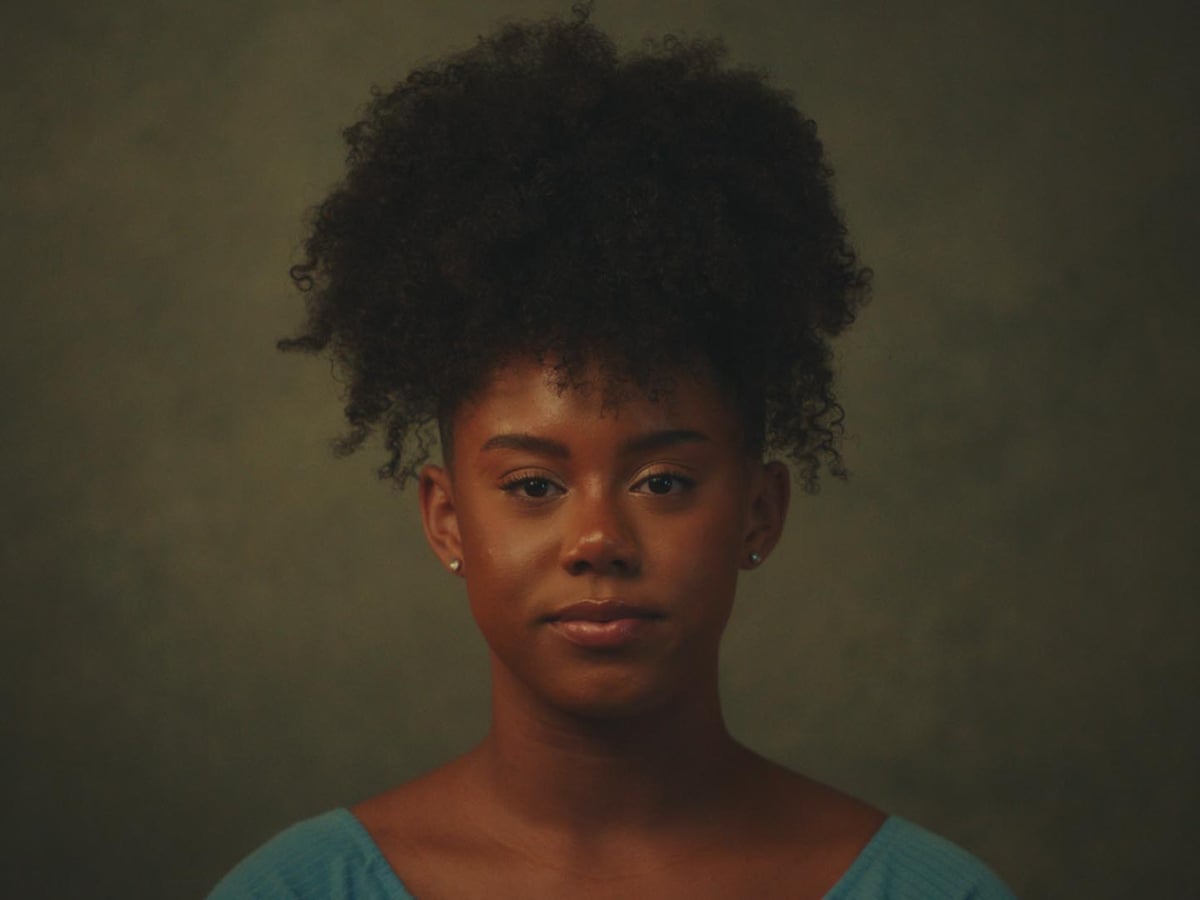
‘Hair Power: Me and My Afro’
Reviewed by Cheyenne Holborough, Creative Writing and English Literature Student, University of Westminster
A documentary by Emma Dabiri, author of the memoir ‘Don’t Touch My Hair’ about the Black hair experience in Britain and was part of Channel 4’s contribution to Black History Month during 2020. The 46-minute documentary interviewed a variety of people and was straight to the point about each person.
The interviewees discussed aspects of Black British hair through history and shared their experiences. Some commented that when they were young, they wanted to be white and were forced to think Eurocentric hair was ‘good hair’; so many used relaxers to achieve what they were told was better – something I can relate to having relaxed my hair for many years. The documentary also covered how Afrocentric hair was viewed by others, including people wanting to touch their hair. One of the interviewees talked about being kicked out of school due to her hair being labelled ‘too big’.
This documentary explores the Black British hair experience in a way I’m sure many will be able to relate to due to how much the interviewees reveal about their lives. I found myself close to tears at some points and remembered the things I had experienced myself. My only criticism is that even though it is a short documentary, I wish they had gone into more detail about how different hair types have their own stigmas attached to them. To some people, those with 4c hair (relating to texture and grade) are usually thought to have the most undesirable hair in comparison to those with 3a to 4b hair. Moreover, I wish they had spoken about colourism and how this is also attached to the discrimination people face regarding their hair type. The use of a hair type system is widely debated among the Black community since one person can, simultaneously, have multiple different hair types which highlights the flaw with trying to assign one hair type to an individual.
Overall, ‘Hair Power: Me and My Afro’ is great for not only educating those who need to learn about hair from a cultural perspective, but also for empowering the people who have been told not to love their curls.

Hold by Michael Donkor, 2018
Reviewed by Kate M Graham, Senior Lecturer in English Literature, University of Westminster
Hold is a spellbinding novel that weaves together ideas around sexuality, race and friendship.
In a narrative that switches between London and Kumasi, Hold explores the friendship between Belinda and Amma. Belinda is brought over from Ghana to befriend Amma, whose parents are worried by her increasing introspection and moodiness. Belinda has to adjust to the sprawling metropolis of London, to the life of British teenagers and, most movingly, she has to learn to grieve.
Central to the novel is Donkor’s brilliant depiction of the friendship between the two young women. Belinda and Amma are very different, but their growing understanding of, and respect for, each other is a powerful thing to witness.
Donkor’s writing is evocative and nuanced, in particular his representation of Amma’s struggle to fit her queer desires with her family life and her Ghanaian heritage is complex and moving.
The evocative nature of Donkor’s writing is also present in the vibrant contexts within which he situates Amma and Belinda. London, Brixton in particular, jumps off the page and Donkor has a gift for writing party scenes. The dialogue, peppered with early noughties teenage slang and Twi phrases and words, is also excellent and even minor characters grab the readers’ attention.
At the end of the novel, Donkor frustrates our desire for closure in either girl’s narrative – but this, coupled with how vividly he draws his characters, mean they stay with us long after we have put the book down. And while we don’t get a neat ending, what we do get is a wonderful exploration of the redemptive, but complex, power of friendship.
Thinking Beyond Your Discipline, Professor Kehinde Andrews. 6pm, 25th May 2022. Fyvie Hall, Free
Kehinde Andrews is Professor of Black Studies at Birmingham City University (BCU). His latest book is The New Age of Empire: How Racism and Colonialism Still Rule World published by Penguin Allen Lane in 2021. He led the development of the Black Studies degree at BCU and is Director of the Centre for Critical Social Research; founder of the Harambee Organisation of Black Unity; and editor-in-chief of Make it Plain.
More information here: https://blog.westminster.ac.uk/graduateschoolfestival/graduate-school-festival-2022/programme-2/thinking-beyond-your-discipline/
War Inna Babylon, ICA – Exhibition Review
Reviewed by Elina Souris, BA Politics and International Relations Student, University of Westminster
The ‘War Inna Babylon’ exhibition at the Institute of Contemporary Arts was an emotional yet eye opening experience. The exhibition offered a detailed account of the experience of racialised policing among members of the ‘Windrush’ generation, who arrived in Britain from the West Indies during the late 1940s and early 1950s. Accounts of ‘race riots’ in Nottingham and Notting Hill in 1958 and the unjust laws put in place to harm the black community allowed a raw reaction from the audience. Many of these issues have never been taught or brought up in my education as a black student, so it was interesting to see how much history has not been told about Britain, the government, and the police treatment of black (British) citizens and the racism that they had to endure.
While the downstairs of the exhibition focused on histories of state violence against black communities, the upstairs exhibition space focused on the case of Mark Duggan, who was shot by members of the Metropolitan Police in Tottenham, North London in August 2011. This part of the exhibition was particularly interesting as it presented a multi-layered forensic analysis of his death, which challenges the official account of his killing (you can view the video on the Forensic Architecture website).
The exhibition also included a presentation by Stafford Scott, the coordinator of Tottenham Rights. Scott talked about how unfair policing and laws have been used to target young black men (and women), explaining the significance of the Metropolitan Police’s ‘gang matrix’, a database of suspected gang members in London. While the police argue that the ‘gang matrix’ is basically a sure way of identifying gang members and preventing violent crime, campaigners and human rights charities argue that the practice is racially discriminatory and there has been no real explanation for why this matrix came about.
Overall, War Inna Babylon was such an interesting exhibition, which allowed an in-depth look into violence against black people all over the UK. Hopefully greater public awareness of these problems will lead to big changes in the future.
Whose Stories? Podcast
Whose Stories? is a podcast about children’s books, diversity, and the role of archives, brought to you by Newcastle University and Seven Stories: The National Centre for Children’s Books. In the first season of our podcast, we’re exploring the story of children’s books and Black Britain. You’ll hear from authors, illustrators, and changemakers in the world of children’s literature, including the multi-award-winning writers John Agard, Valerie Bloom, and Beverley Naidoo. You’ll be introduced to Seven Stories’ unique collection of archival material and learn about why building a truly representative national archive of children’s books is so critical, and we’ll draw on the expertise of researchers at Newcastle University to put a spotlight on issues of diversity and representation in children’s literature and its history within these contexts. Ultimately, you will be shown what we can gain from making children’s books more inclusive – and what’s lost when the UK’s children don’t find themselves reflected in the words (and worlds) they find on the page.
Celebrating World Food Safety Day 2021
Reviewed by Dr Amarachukwu Anyogu, Lecturer in Microbiology, University of Westminster
Food is essential to our survival. However, estimates from the World Health Organisation suggest that at least 1 in 10 people fall ill, and as many as 420 000 people die each year after consuming unsafe food. Unsafe food contains harmful microorganisms or chemicals, and children under five bear the highest burden of unsafe food.
World Food Safety (WFS) Day is celebrated on the 7th of June each year. Starting in 2019, WFS Day is an opportunity for everyone to take time to think about food safety – something we so often take for granted. The theme for this year, ‘Safe Food Now for a Healthy tomorrow’, acknowledges the long term benefits for individuals and economies when food systems deliver safe food to consumers. So much scientific research has gone into ensuring the food we eat is safe. However, this information is not always accessible outside the scientific community.
My research interests centre on the interactions of microorganisms in food, and to celebrate WFS Day 2021, I collaborated with other scientists to produce ‘Under the Microscope.’ The articles compiled in this special issue aim to draw attention to food safety issues, particularly in low resource settings. In addition to taking our science from the lab to society, we aim to inspire action to better detect and prevent hazards in food.
If it is not safe, it is not food.
To read more please visit here
Subnormal: A British Scandal
Reviewed by Bryan Bonaparte, Senior Lecturer, University of Westminster
To some, the program SUBNORMAL: A British Scandal recently broadcast on the BBC would have been a revelation. But to many, particularly those from the Caribbean, it was simply a reminder. The program not only highlighted the injustice and discrimination inflicted on Black children within the British education system in the 60s and 70s; it also demonstrated the untruths and miseducation that have been fed to this society for many years and perpetuate to this day: that these people are not as intelligent, not as good. As such, societies – not just here but around the world – have continually made downward social comparisons with Black people, looking for differences so they can feel justified in their biased behaviour towards us.
The programme acknowledges that the disproportionate number of children sent to Educationally Sub-Normal (ESN) schools was scandalous. Yet, we are in the midst of another scandal in terms of the disproportionate number of Black children being excluded from mainstream schooling (at three times the rate for Black Caribbean children compared to white children) and placed within Pupil Referral Units for containment rather than helping them achieve their full potential.
Are we in denial that this is part of the legacy of ESN schools where, today, the education system still harbours a view that Black children, and Black adults for that matter, are ‘not up to the mark’? Otherwise, why would there be an attainment gap or ethnicity pay gap? Why are so few Black professors and lecturers teaching STEM subjects and so few Black members listed on the FTSE 100? Differential treatment and discriminatory practices are still rife within the education system and the structure of society at large. And as a result, we are all deprived of opportunities to make more socially upward comparisons with aspirational and inspirational Black people that exist beyond the sporting arena.
Lynette Yiadom-Boakye: Fly In League With The Night @ Tate Britain
Reviewed by Sara Hafeez, Academic Engagement Librarian for School of Media & Communication, University of Westminster
This exhibition of paintings was my return to the gallery after a lockdown of forgoing public art spaces. Maybe a year’s worth of online streamed interviews and watching other people walk in those spaces had passed. I didn’t know a lot about the artist beforehand – only that she’s Black British and known for her portraiture.
It turned out to be the perfect tonic to the months of everything mediated through a screen. It was a major show of painted portraits, in deep, sonorous oils that slowed down our attention, drawing us into the story of each moment.
The exhibition takes us from smaller works in smaller rooms to wider canvases that command entire walls to host them. The very presence of work at that scale, declares its position in a national gallery. These paintings are meant to be in the public record, the public domain. They are a record of artistic presence.
We are invited in to witness a moment in the imagined life of each subject(s). As we stop and sink into the paintings, the subjects unfurl as characters to us. We think about what led up to that moment, what suspends us there and what could follow.
The portraits are whole, contemplative, heavy and light at the same time. They require our creative attention and they resonate with us. People we’ve met, feelings we recognise, places we remember. It was a calming and inspiring experience. I would recommend Lynette Yiadom-Boakye’s work to anyone wanting to explore what the Black gaze might look like in fine art.
You can find further links to her work & process here:
Life n Locs
Created by the Viberate Collective
The objective of this documentary is to highlight and celebrate Locs in an uplifting and vibrant platform whilst educating, discussing and addressing the challenges and social biases people who wear locs encounter on a daily basis.
Our goal is to change the narrative and misconception of Locs in modern times. How these hairstyles should be accepted forwhat they are – an afro hair type.
Considering the negative connotations Locs are subjected to, we tasked ourselves (Viberate Collective) to showcase these hairstyles in an editorial photoshoot and a brief interview with a few individuals and personalities which would help enlighten the unaware public.
The hidden life of a Top Boy- The Psychologist
Ron Dodzro, who identifies as Black man, a Clinical Psychologist in Training and a lover of UK rap, looks to the genre to make sense of the hidden aspects of gang-affiliated violence.
The People and Places of Caribbean Cooking
Reviewed by Edna Johnson, Sales Officer, University of Westminster
This one-hour online panel discussion was part of the British Library season of events inspired by cookbooks, recipes and culinary stories.
The discussion kicked off with the question: “What role does food play in your life today?” The unanimous agreement was that food connects us to where we are from and keeps our heritage alive. A substantial part of the discussion emphasised that Caribbean food is very diverse. It does not simply consist of rice ‘n peas and jerk chicken, as many people might think. There is richness and range in the cuisine from island to island, from Rastafarian vegetarian cooking in the mountains of Jamaica to coastal fish dishes.
Another pertinent point was that Caribbean cuisine should be taken into the next generation. Panellist Rosamund Grant shared her experiences of encouraging her grandchildren to assist her whilst cooking. She has been cooking during lockdown for the community. Her granddaughter helped by opening spices and asking questions to learn more about Caribbean food culture. Another panellist suggested an expo on Caribbean food in the UK. This would build on the experiences of those who have visited the Caribbean, or provide an opportunity for others to try the cuisine. I would welcome an expo to experience food from islands many of us may never get to visit.
The Colour of Madness: Exploring BAME Mental Health in the UK
Authors: Samara Linton & Rianna Walcott (Eds.)
A PDF of this book is available upon request, please contact us at blackhistoryyear@westminster.ac.uk
The Forensic Psychology Podcast- Diversity, Inclusion and the super power of curiosity
Martine Ratcliffe has worked as a forensic psychologist for HM Prison and Probation Service for 20 years. She’s currently the national diversity and inclusion (D&I) lead for the Psychology Services Group. Her passion for D&I has been amplified through her work with children. becoming a mum and from personal experience as a mixed race woman working within HMPPS.
Leigh-Anne Pinnock: Race, Pop & Power
Reviewed by Manvir Grewal, Lecturer, Westminster Law School, University of Westminster
Singer Leigh-Anne Pinnock explores the complexities of race and racism in UK’s music industry. Aptly titled, Race, Pop & Power, Leigh-Anne delves deep into her Caribbean heritage and mixed-race identity, to reflect on her experiences in a world-renowned girl band, Little Mix. This illuminating documentary sees Leigh-Anne grapple with her understanding of institutional and systemic racism. Not only is it an honest and reflective 60 minutes of her personal experiences, but she turns her efforts to educate herself and others about colourism, performative activism, and stereotypes prevalent in the creative industries.
The documentary captures the Black Lives Matter protests after the murder of George Floyd. Sitting down with other Black artists, including Alexandra Burke and Keisha Buchanan, they discuss the nuances and subtlety of race and racism in the music industry. In their discussion they explore how the industry left them feeling invisible, alienated and often side-lined. As well as other artists, Leigh-Anne sat down with her parents to explore their attitudes and experiences of race. In a pivotal point in the documentary, Leigh Anne confronts her fiancé, professional footballer Andre Gray, over offensive and racist tweets. They have a frank discussion on their upbringing and understanding of race and racism. The documentary is one of the first to be released after the murder of George Floyd that focuses on the music industry and although Leigh-Anne makes efforts to educate herself and others, she is determined that this documentary will not be the end of her activism.
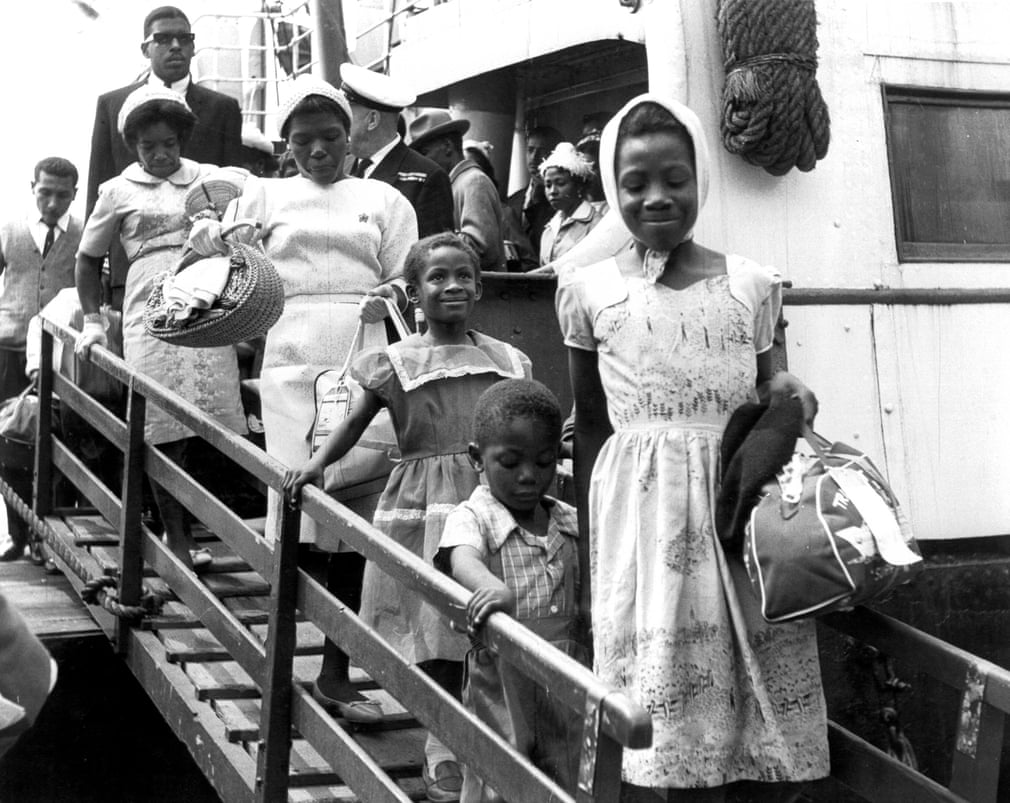
Windrush Day 2021
As we mark Windrush Day on 22nd June we highlight the shortcomings of the Windrush Compensation Scheme that was established to right the wrongs of one of the biggest scandals of recent years.
Just over two years ago, the UK government finally accepted that it had wrongly detained, deported and denied legal rights to Commonwealth citizens from the Caribbean, Africa, and Southern Asia in what is now known as the ‘Windrush Scandal’. The government established the Windrush Compensation Scheme to provide victims of the scandal with compensation for their suffering.
Whilst we welcomed the establishment of the compensation scheme, it has not delivered as promised when it was set up in 2019. Thousands of people have been affected by this scandal, but many are reluctant, and often frightened, to ask for help. As of May 2021, only an estimated 19% of people who may be eligible for help have come forward. By the end of May 2021, only 687 people had been awarded payments out of 2,367 claims. A recent National Audit Office report identified numerous errors that have contributed to a failure to compensate claimants fairly and quickly.
Whilst some changes were made to the scheme in December 2020 following media and stakeholder criticism, and the pace of pay-outs has improved in recent months, there are still significant ongoing issues that require attention.
The Government has not done enough to provide legal support to those wishing to access the scheme. A number of voluntary and community organisations have stepped in to fill the gap – organisations like the Windrush Justice Clinic.
Windrush Day should be a day of celebration, but instead many people who have made huge contributions to our society are facing an uncertain future. We urge you to act now.
Things people can do:
- Sign the petition to take the WCS away from the Home Office https://you.38degrees.org.uk/petitions/improve-the-compensation-scheme-for-windrush-survivors-and-family-members
- UoW students can volunteer in the Windrush Justice clinic next term. Contact lawclinic@westminster.ac.uk to find out how you can get involved.
Please visit the links below to find out more.
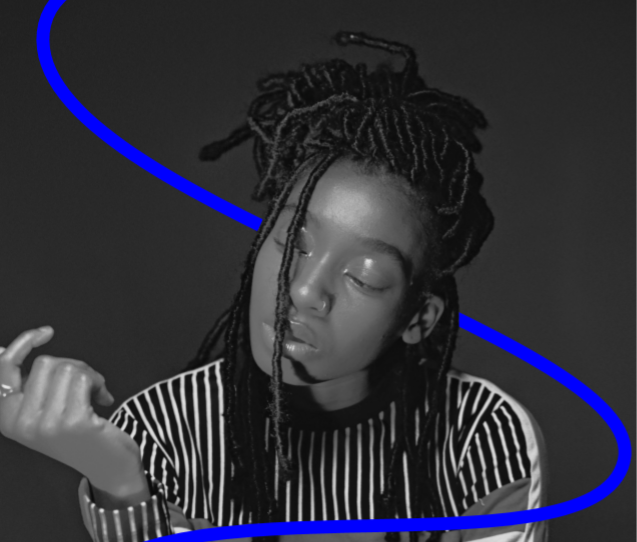
MA Music Business Management Isatta Cesay writes about the Black Women in Hip Hop for PRS magazine
Isatta Sheriff takes us on a journey through different eras in UK rap music via the experiences of women MCs, exploring whether attitudes towards women have evolved and whether there has been a reduction in misogyny.
Isatta Cesay is a Richard Antwi associate scholar and doing brilliant work please. read her article here

Fashion alumna Priya Ahluwalia receives Queen Elizabeth II Award for British Design
Applications open for Richard Antwi Scholarship for Music Business Management course
Following the Richard Antwi Scholarship’s launch in November 2017, the Friends Of Richard Antwi and University of Westminster have announced that applications are now open for the 2018/19 academic year, while also confirming that the scholarship will be available annually until at least 2023.
For more details and to read the full story please visit here

Westminster alumnus leads the way in fight against COVID-19 as one of core team working on the Oxford COVID-19 vaccine programme
Westminster alumnus Dr Mustapha Bittaye, who is a Postdoctoral Scientist at the Jenner Institute, University of Oxford, is one of the core team of scientists who worked on the Oxford-AstraZeneca COVID-19 vaccine, which was approved for use in the UK last week.
To read the story in full please visit here
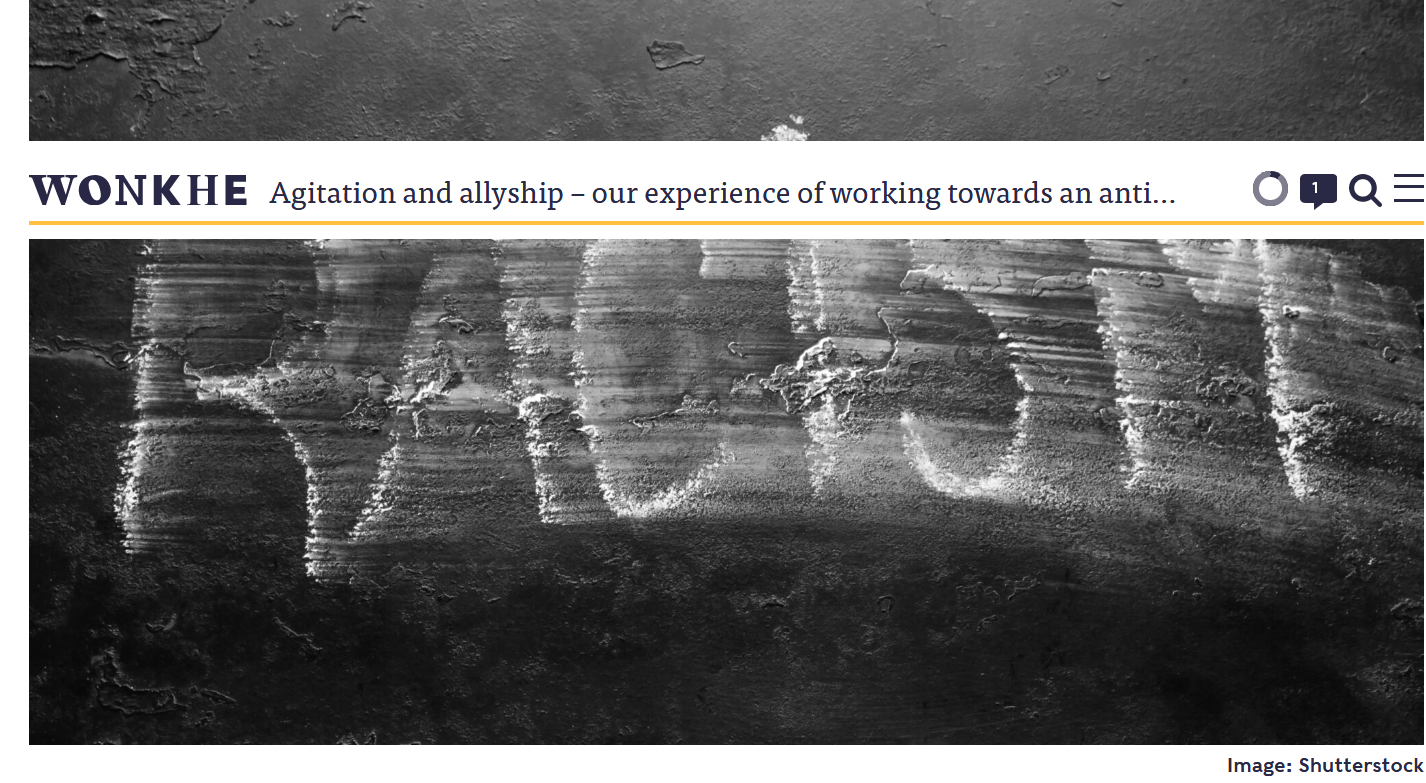
Agitation and allyship – our experience of working towards an anti-racist university
As co-chairs of the BME network at the University of Westminster Deborah Husbands and Dibyesh Anand reflect on working to overcome racism in HE.
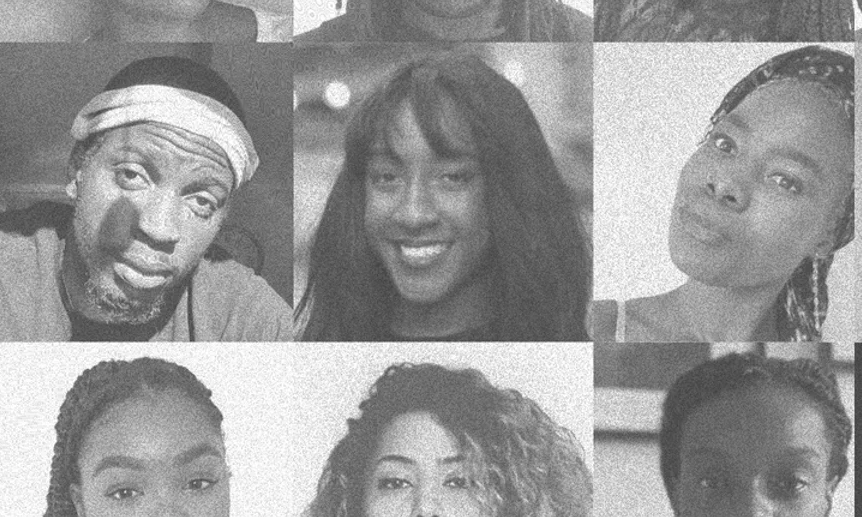
POC in Architecture: Celebrating people of colour in architecture:
Welcome to POC in Architecture, a unique blog here for you to explore. POC in Architecture is about sharing design achievements, interesting topics and creating discussions. It is a platform aimed to support and celebrate the community of black and mixed heritage men and women in the architectural sector.

